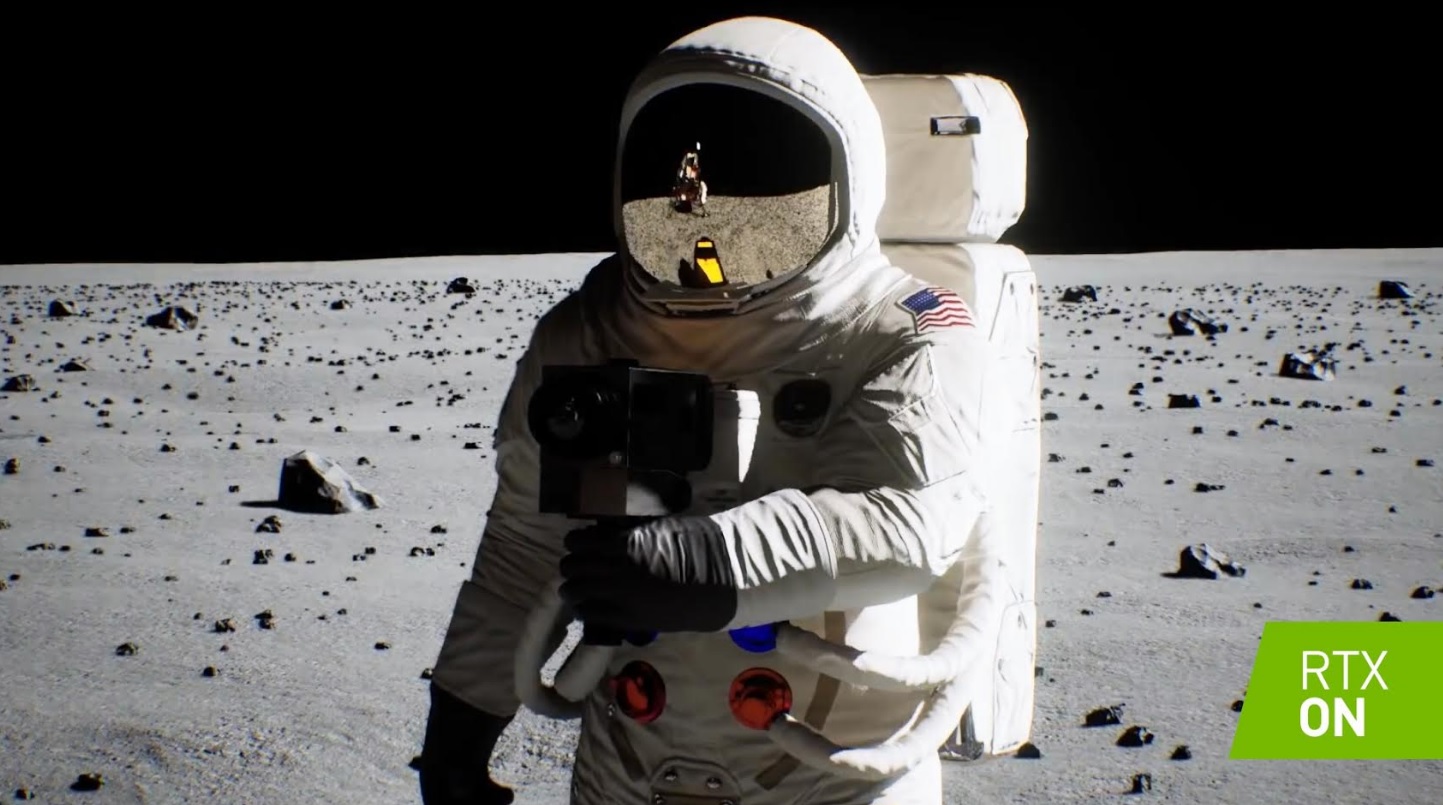One small step for man, one giant leap for real-time ray tracing. Nvidia’s graphics wizards have reproduced the moon landing in honor of the 50th anniversary of Neil Armstrong’s first walk on the moon.
Using Nvidia GeForce RTX graphics processing units (GPUs) designed to render the best video games, Nvidia produced a realistic rendering of the Apollo 11 moon landing that took place a half-century ago.
![]()

![]()